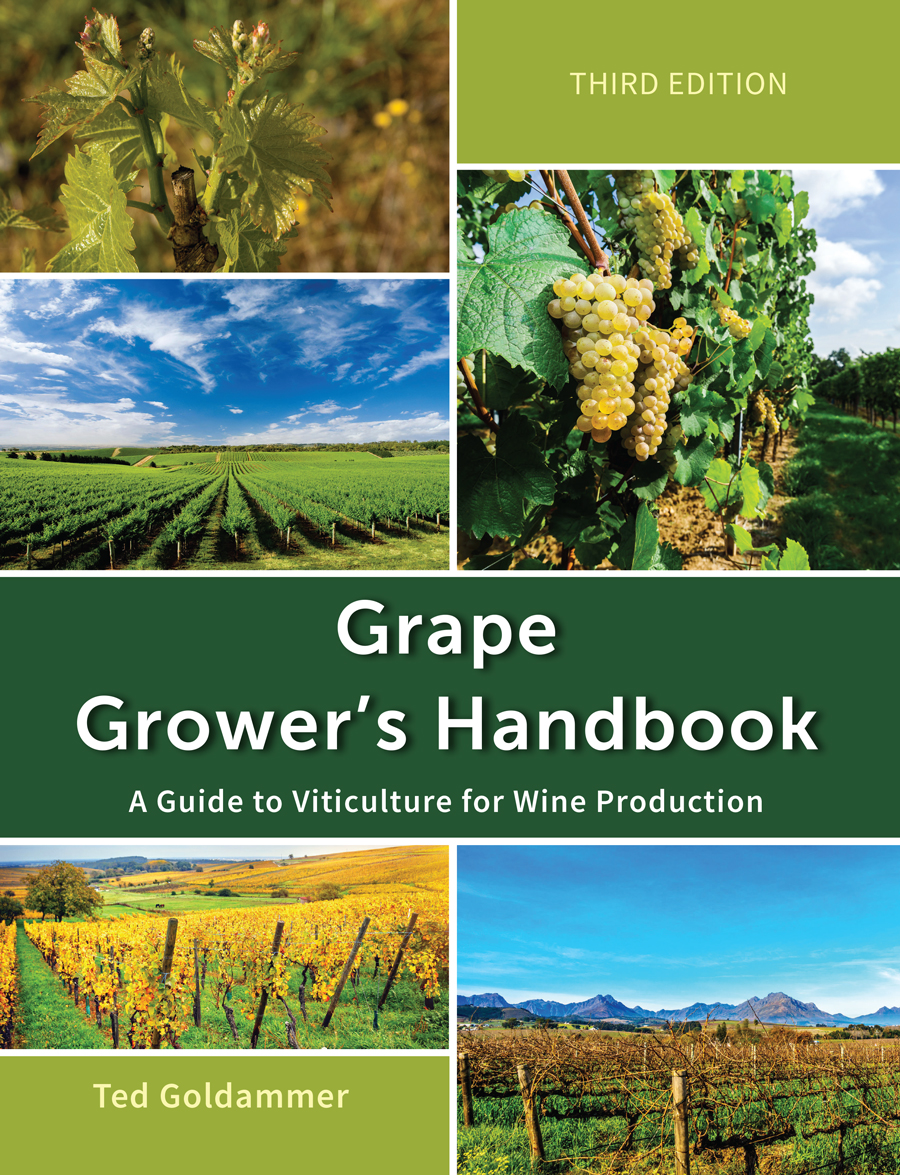Grape Grower's Handbook
A Guide To Viticulture for Wine Production
- Publisher: Apex Publishers
- Author: Ted Goldammer
- Publication Date: March 2018: Updated 4/2021
- Printing History: Third Edition (Updated)
- ISBN (13): 978-0-9675212-5-1
- Page Content: 482 pages
- Book Cover: Soft cover-nylon matte scuff resistant Layflat film lamination
- Binding: Sew and Wrap
- Trim size: 8 1/2" x 11" x 1"
- Book Art: Color
- Tables: 52
- Photographs: 201
- Illustrations/Charts: 38
- Produced and Printed in U.S.A.
Buy from Apex
- Retail Price: $97.95
- Your Price: $79.95
- FREE GROUND SHIPPING
- Ships within 1-2 days
- How to Order
About this Book
Grapes are among the first fruit species to be domesticated and today are the world's most economically important fresh fruit crop used to make a variety of fresh, dried and processed products such as wine. It has been said that "the secret to great wine starts in the vineyard," and "you can make poor-quality wine out of highquality grapes, but you cannot expect to make great wine from poor-quality grapes." Growing high-quality grapes for premium wine requires the grower to fully understand the principles of viticulture. The new revised edition of the Grape Grower's Handbook is a complete rewrite and provides the grower with a broad spectrum of expertise and knowledge in growing grapes for wine grape production in commercial vineyards. Some books offer a strong academic perspective with little practical application on growing grapes for wine production, other books offer a broad overview on growing grapes but provide little detail while most books narrowly focus only on more traditional topics of grape growing. Unlike most books on growing grapes for wine production the Grape Grower's Handbook is meant to be a stand-alone publication that describes all aspects of wine grape production. The book is written in a nontechnical format designed to be practical and well- suited for field application. Some of the topics discussed but not limited to include grapevine growth, varieties, rootstocks, climate requirements, training and pruning, canopy management, development and nutrition, water and soil management, pests and diseases, pesticide application, frost protection, winter protection of grapevines, cover crops, and pre-harvest operations. The book is thoughtfully organized presenting a seamless flow of topics within chapters making it easy to find specific information that interests the reader. The information in this easy-to-use guide is distilled from a variety of sources and has the added value of numerous citations so interested readers can research topics in greater detail if desired. No one concerned with the growing of grapes for wine production can afford to be without this book.

